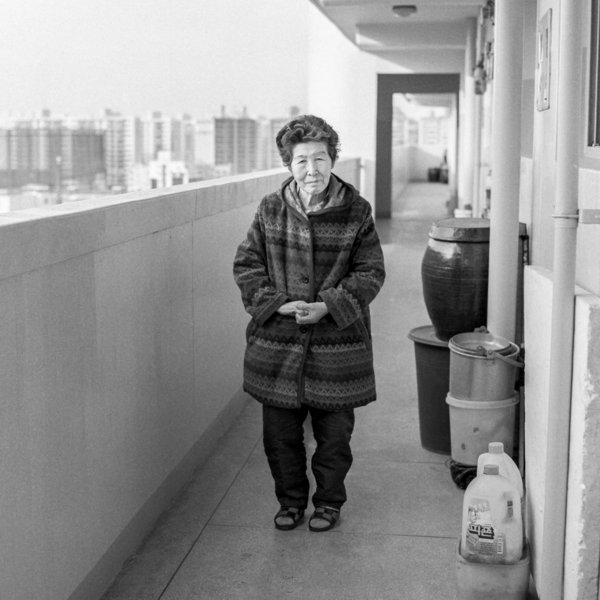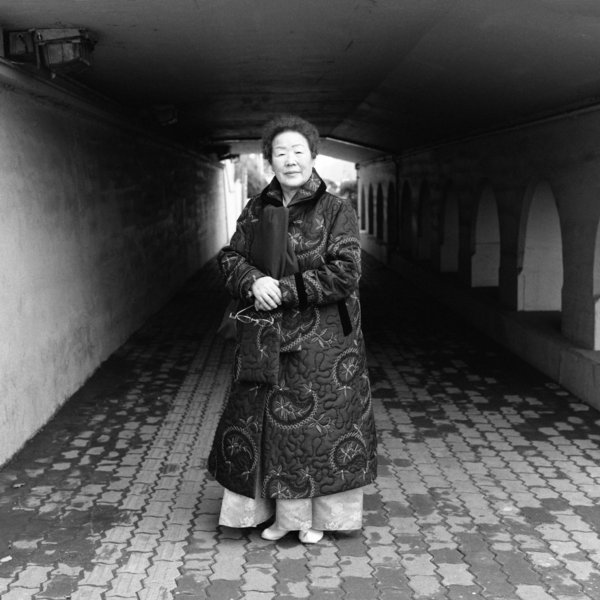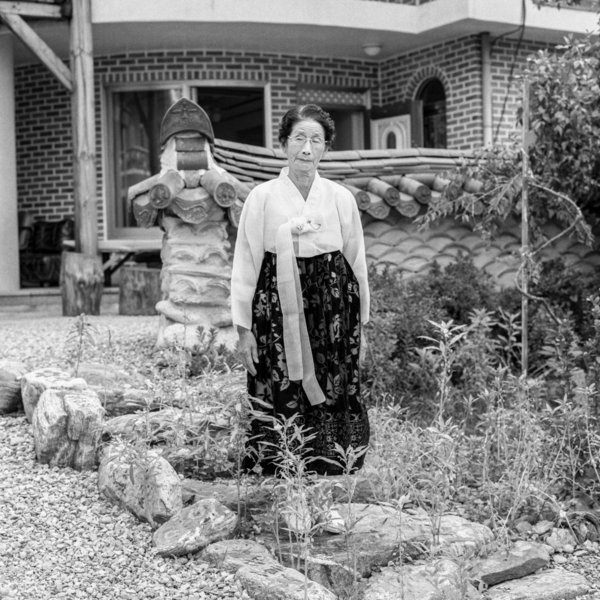Every Wednesday, the female residents of the “House of Sharing” in Seoul go to the Japanese Embassy. There, they gather together with other protesters in order to draw attention to their fate, which the Japanese government plays down and would dearly like to pass over in complete silence. The inhabitants of the “House of Sharing” hostel are today well over ninety years old and have been living together since the 1990s. They are all survivors of the so-called “comfort women” system, which Japan set up in the time of the Asian-Pacific War between 1937 and 1945. In this period, Japanese soldiers systematically abducted young girls and women, largely from Korea, but also from Taiwan, China, Malaysia, or the Philippines, and forced them into prostitution. So as to boost the morale of the soldiers, to curb venereal diseases, or to humiliate the enemy – a common practice in wartime, but rarely systematized so efficiently. The figures for how many women and girls were abducted into enforced prostitution vary. Some sources state thirty; others speak of up to 300,000. It is difficult to reconstruct the cases. On the one hand, because many of the women died during the war, from infection, starvation, the effects of the continual raping, or took their own lives: it is reckoned that only about thirty per cent of all the women abducted survived. And on the other hand, those who did survive have been silent for decades. For violence in general and sexualized violence in particular leads those on whom it was inflicted to fall silent. In 1991, Kim Hak-sun spoke for the first time on Korean television about the crimes committed by the Japanese Army (only in 2008 was rape in armed conflicts officially condemned by the UN as a war crime). Thereafter, other women also began to speak in public about what they had to endure. In 1992, the still continuing protest outside the Japanese Embassy in Seoul began with the words: “It is the Japanese government who must be ashamed, not us!” The women demand official Japanese recognition, a full investigation, and compensatory payments. Only in January of this year was Japan sentenced by a South Korean court to payment of damages equivalent to € 75,000 to each of twelve women, five of whom are still alive. Japan rejects the action with reference to principles of international law – and also because it brings the issue back into the glare of world publicity.
![[Translate to English:] Yi Ok-seon, born 1927 in Busan in the Gyeongsang Province, Southeast Korea. [Translate to English:] Yi Ok-seon, born 1927 in Busan in the Gyeongsang Province, Southeast Korea.](/fileadmin/_processed_/f/a/csm_img05_Tsukasa_yi_okseon_6f28b28112.jpg)
Yi Ok-seon, born 1927 in Busan in the Gyeongsang Province, Southeast Korea.
© Yajima Tsukasa, 2003–2006.
During their weekly protests, the residents of the “House of Sharing” gather around the Peace Statue created by the Korean artist couple Kim Eun-Sung und Kim Seo-Kyung, which has stood in front of the Embassy since 2011. The statue shows a young girl sitting on a chair, her hands folded. The chair beside her is empty. Such peace statues can be found in various places around the world to draw attention to the fate of the women.
The protests and the statues are ways of re-gaining sovereignty of interpretation over their own past and their own trauma. One of these peace statues was erected in September last year in Berlin-Moabit by the German-Korean Korea Association. Whereupon the Japanese government pressed the Berlin Senate Chancellery to have it removed. Again and again, the Japanese government attempts to censor unwanted issues that are taken up by artists. At the Aichi Triennale, for example, there was an outcry and threats because the peace statue was put on display there. At the Hiroshima Biennale, which should have taken place in September of last year, there was an intention to organize a state committee to decide on suitable and unsuitable works of art. A similar treatment of those affected can be witnessed in the case of the Fukushima nuclear disaster: instead of facing up to and coming to grips with the collective trauma of those involved, the government repeatedly threatens to withdraw financial aid unless particular works critical of the nuclear industry are removed from various exhibitions. Among other cases, this happened with a planned presentation in the foyer of the United Nations in New York. Officialdom is silent, downplays the issue, and so denies the victims any investigation and financial compensation.
The injustice suffered cannot be remedied. Nobody’s life can be given back to them. But the victims can be given back their voices; their suffering can be acknowledged and made visible. If there is no official reappraisal, then a public debate that, in a creative manner, gives the victims back their dignity and sovereignty of interpretation, and thus the possibility of dealing with their own trauma, is all the more important. In the process, the public perception of the women also changes. From being collective victims, they become self-reliant individuals who demand to be given their rights.
From 2003 to 2006, the Japanese photographer Tsukasa Yajima lived with the survivors of the “comfort women” system in the “House of Sharing”. In his project From Face to Face, Yajima brings together the personal biographies of a collective experience. He not only produced photographs of the women but asked them to sing their favourite song. In this way, their images do not remain one-dimensional but unfold to reveal all the various facets of their personalities that otherwise disappear behind the experience of violence. In their singing, they re-appropriate their voices and their histories.
He photographed the women in self-determined poses. They are all standing upright, are carefully dressed and look directly into the camera. The pictures show old women with bent legs and faces in which life has left its furrows. The songs they sing are as varied as they are. Together with the anthropologist Joshua D. Pilzer, Yajima recorded and translated the songs. Some sing folk-songs, others old Japanese military songs or songs they still remember from their childhood and which they have altered so as to lend expression to what they have experienced. Externally, the women show nothing of the courageous stories that Yajima and Pilzer have written down to accompany the pictures and songs. These are biographies with horrifying details of their escapes and of the, in most cases, difficult and long return journeys to Korea. But there are also moving details about the personalities and preferences of the women, who are known in Korea as ‘halmonis’ – grandmothers. One can read of the dogs and rabbits which Yi Yong-nyeo took care of after she moved out of the “House of Sharing”, and of how she grew vegetables herself and called herself a master farmer before her death in 2008. One can read about the highly introverted Bae Chun-hui, who returned to Korea by a very circuitous route only in 1951. One can also read that Chun-hui, who passed away in 2014, was very fond of children and animals, and liked watching melodramatic and romantic films above all. Or one learns about Kim Sun-deok, who died in 2004, and painted the flower that is now the symbol of the protests. As a child, she wanted to be a traditional entertainer and attended an art school, which is why her singing is especially professional. The manifold potential lives, which they were all robbed of, unfold. The songs they sing are songs about love, homecoming, hope – about spring that makes the flowers blossom again, about growing old, and the passing of time. And again and again, one reads that they did not pluck up the courage to speak until others had spoken. They were able to find their individual voices in the communal act of speaking. The artistic debate gives the survivors an opportunity to tell a story that is new, different, their own, a story that is not only conditioned by the violence that was done to them – even if it is violence that left its mark on their lives. In their documentary work, Yajima and Pilzer show that behind collective suffering there are always individuals with their dreams and wishes, their past and future.
Soon the last women, who were born between 1920 and 1930, will have passed on. This makes social debate and active, communal remembering and commemoration all the more important. Because it is only together that the loneliness and silence of violence can be overcome.

![[Translate to English:] Yi Yong-nyeo (1926–2013), born in Yeoju in the Gyeonggi Province, Central Korea. [Translate to English:] Yi Yong-nyeo (1926–2013), born in Yeoju in the Gyeonggi Province, Central Korea.](/fileadmin/_processed_/d/1/csm_img02_Tsukasa_yi_yongnyeo_91490f2914.jpg)

